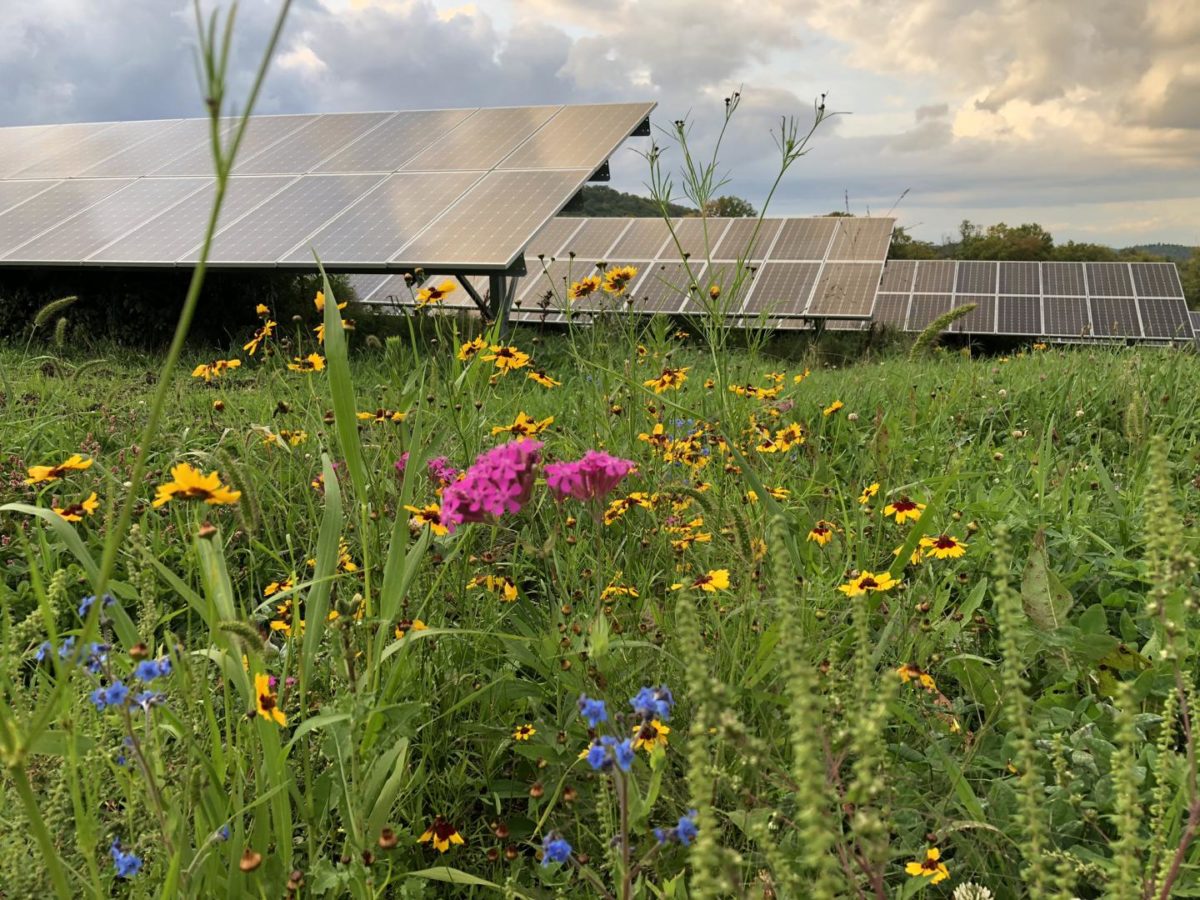Pollinator habitats are one of a few dual land use concepts gaining ground with solar project developers, with a few successful projects already in operation in various regions. Theoretically, having wildflowers on the land around a solar park can have benefits to the system owner in energy yield and vegetation management, as well as providing much-needed habitat for bees and other pollinating insects.
With these projects still in their early stages, however, long-term benefits are yet to be proven, and more research will be needed to refine the approach and ensure maximum benefits are realized. A group of entomologists in the United States has analyzed recent projects and research in this area, and put together suggestions for best practices and the development of standards for developing and managing pollinator habitats on land also occupied by a solar PV installation.
The group, led by the Entomological Society of America, reports its findings in the paper Can Solar Energy Fuel Pollinator Conservation?, published in Environmental Entomology. “You can say, ‘How is this different than a hundred other conservation practices?'” says Adam Dolezal, assistant professor of entomology at the University of Illinois at Urbana-Champaign. “And the answer is, well, it has some very weird and specific requirements to make it even on the table for solar developers to consider. And that's something we're still learning.”
Best practice
To realize the potential benefits of this approach, care must be taken from the start. Developers should “choose plants and arrangements appropriate for a site’s unique growing conditions”, taking into account environmental factors like climate and soil conditions, as well as PV system characteristics such as the height of the panels and minimizing overgrowth.
Popular content
And after the planning and installation stage, ongoing maintenance will be required to keep the habitat thriving and ensure that some slower-growing species can establish themselves, and this would likely need third party monitoring and certification, as is beginning to appear with legislation for ‘pollinator friendly’ landscapes being introduced in various regions.
But there is plenty more work needed for this approach to realize its full potential. “For this practice to provide tangible results, cooperation between policymakers, researchers, and industry stakeholders is critical to producing recommendations or requirements that benefit pollinators while remaining realistic within the framework of utility-scale solar developments,” the researchers conclude. “without rigorous implementation, assessment, and independent oversight, these efforts could be seen as little more than a form of ‘greenwashing’ that touts benefits to pollinators without providing them.”
This content is protected by copyright and may not be reused. If you want to cooperate with us and would like to reuse some of our content, please contact: editors@pv-magazine.com.



5 comments
By submitting this form you agree to pv magazine using your data for the purposes of publishing your comment.
Your personal data will only be disclosed or otherwise transmitted to third parties for the purposes of spam filtering or if this is necessary for technical maintenance of the website. Any other transfer to third parties will not take place unless this is justified on the basis of applicable data protection regulations or if pv magazine is legally obliged to do so.
You may revoke this consent at any time with effect for the future, in which case your personal data will be deleted immediately. Otherwise, your data will be deleted if pv magazine has processed your request or the purpose of data storage is fulfilled.
Further information on data privacy can be found in our Data Protection Policy.